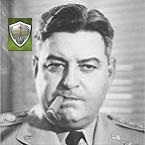ColinWright
Posts: 2604
Joined: 10/13/2005
Status: offline

|
quote:
ORIGINAL: Curtis Lemay
quote:
ORIGINAL: ColinWright
TOAW treats supply as if it was like cell phone coverage. Cell phone reception in Fields, Oregon will be so good. It doesn't matter whether there are ten users, or one user: cell phone reception will be the same. Similarly, in TOAW, it doesn't matter whether one division is relying on a given road for its supplies or if ten divisions are: they'll each receive the same quantity of supplies regardless.
Note that this is more or less the same supply system used by board wargames for decades. In fact, they were usually far more simplistic: Line of communication = in supply, otherwise = out of supply. Worked pretty well for most subjects.
One could make the same argument for just arbitrarily assigning a simple numerical value for combat and another for movement: 'it worked pretty well for most subjects.'
The fact is that the supply model you describe was used because prior to computers, there wasn't much of a choice, practically speaking. However, now we have a choice -- and there's little reason to persist in using a supply paradigm that simply contradicts reality.quote:
quote:
...and this is very inaccurate. Obviously, if ten cases of ammunition can come up a given road per minute, and there is only one division receiving these cases of ammunition, it can use ten cases per minute. If there are ten divisions, each could only use one case per minute.
This is not what happens in OPART. One division or ten divisions; they all get ten cases per minute.
It's not necessarily inaccurate at all. That's one reason why there's a stacking limit - to prevent such over-concentrated conditions. In a normal force distribution, the limit isn't the capacity of the road or rail line - it's the amount of transport available - that's why supply level drops the further a unit is from a source. The designer has a reasonable idea of how much force and how much transport will be on the map at any given time and can adjust the Force Supply Level accordingly.
This simply ignores my point. How have you demonstrated that ten divisions do not in fact require ten times as much supply as one division?quote:
quote:
Now, Bob Cross has tried to argue that this only matters in marginal cases.
Well, it certainly only matters enough to justify the huge effort required by programmers, designers, & players in marginal cases.
quote:
It's true that the unrealism is most evident in certain cases: Norway 1940, North Africa, Murmansk. However and in fact, the unrealism affects simulation of even the most 'mainstream' scenarios: the advance of the Western Allies in Northwest Europe in 1944, for example. In point of fact, Eisenhower more or less had a choice between giving everyone ten percent supply or giving specific armies thirty percent supply.
Why? Because only so many tons of supplies could be delivered, and the OPART model notwithstanding, a ton used by one division can't be used by another.
But because of the OPART model, this aspect of the campaign simply can't be simulated. You can arbitrarily give all formations the same supply no matter what. You can give increased supply to the same formations that got it historically. However, you cannot be Eisenhower and decide for yourself how the supplies will be distributed. Various devices exist for partially simulating the choice -- but you cannot do what he did and say 'okay -- this army gets 30% supply but that one doesn't.' If you're the Russians in a 1942-43 scenario, you can't say 'let's leave the Italians alone for now and concentrate on reducing the Stalingrad pocket.' No -- all fronts will get just about the distribution of supply that the designer has determined before hand, and it'll be like pulling teeth to create any mechanism for altering this.
Why? Because the supply model fails to reflect the essential nature of supply, which is that if I eat a given bean, you can't eat it too. We need to have a model that reflects this. Until we do, we are not going to address the fundamental problem.
Actually, as designer - and then as player - you do have tools to address this - HQs and Supply Units. Check out "France 1944" - there is one Allied Supply Unit and HQs support all same-nation units. So, where that Supply Unit goes and where the HQs are focused will get about 50% more supply than elsewhere. And there are suggestions on the wishlist for further flexibility. The problem doesn't require the enormous burden of discrete supply handling. And I can't envision anyone designing (or playing) "France 1944" with such a system (it's hard enough as it is).
Now there are situations that do need it regardless of that burden, but those are primarily situations that involve extensive unrestricted naval operations. (So Colin's motive here should be transparent).
The workarounds you describe are just that -- workarounds. And I doubt if you can convince even yourself that they are completely satisfactory.
...and they never will be satisfactory. Why? Because they areworkarounds. We are dealing with a paradigm for supply that is flawed at the core. Why not think about coming up with a paradigm that isn't flawed -- that treats supply as the consumable, volume determined commodity that it is.
Let's reverse this. Suppose we started trying to provide cell-phone signal strength based on the anticipated number of users. Not coverage area -- signal strength. Well, pretty soon people in New York City are walking around with these massive wheeled battery packs to generate the 'signal strength' they supposedly need. People in rural Nebraska, on the other hand, can barely talk to somebody on the other side of the old homestead.
The system would work -- sort of. We could even stick with the paradigm and still make improvements.
But think how much better we could do if we based our system on an appreciation of the actual dynamics involved. Similarly with supply.
Now, my intentions and your stated avowal notwithstanding, you have dragged me into a pig-headed, futile argument essentially about the merits of the current system versus making some fundamental improvement. Congratulations.
< Message edited by ColinWright -- 1/6/2008 11:07:33 PM >
_____________________________
I am not Charlie Hebdo
|
 Printable Version
Printable Version






 Thanks Colin - that seems to make sense - as far as TOAW4 goes, should this be adjustable by the players or the scenario designer in an ideal situation?
Thanks Colin - that seems to make sense - as far as TOAW4 goes, should this be adjustable by the players or the scenario designer in an ideal situation?



 New Messages
New Messages No New Messages
No New Messages Hot Topic w/ New Messages
Hot Topic w/ New Messages Hot Topic w/o New Messages
Hot Topic w/o New Messages Locked w/ New Messages
Locked w/ New Messages Locked w/o New Messages
Locked w/o New Messages Post New Thread
Post New Thread